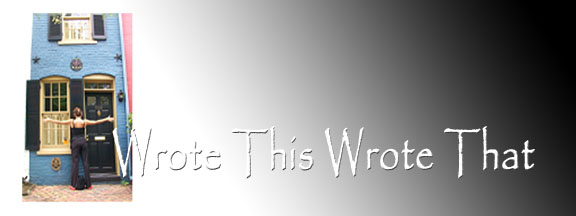
For Home & Design Magazine
By Stephanie Cavanaugh
Sitting atop a hill overlooking a river, the winter wind whips raw around Bengt Swenson’s home in Franklin, Michigan. Here, temperatures sometimes dip to 20 below. The Swedish-born architect’s studio claims the hill’s highest point, enjoying a vista that is at once marvelously dramatic and excruciatingly cold. But all is toasty within—and quite stunningly so—thanks to the 140-year old wood stove that occupies a prideful corner.
Ten feet tall and 4 feet around the cylindrical kakelugnar, as it’s called in Swedish, is covered with 50 or so hand-painted pink and white porcelain tiles, ornamented with pure gold. An elaborate crown, like the turret of a medieval castle, tickles the ceiling. Created by the legendary Swedish ceramics manufacturer, Rörstrand, the stove has been appraised at $30,000.
“The charm is the porcelain, it’s a fabulous conversation piece,” says Swenson, a trace of his homeland lilting his speech. “But the beauty is in the radiant heat they give. I turn this fellow on Friday afternoon with clean hardwood and heat it a little, stoke it nice and friendly. On Saturday morning I put a few more logs on, no larger than a loaf of bread. And that thing is toasty for days. It burns so clean there’s hardly any ashes.”
Tiled stoves were once the primary mode of heating in Sweden, as they were in much of northern Europe including Austria, Germany, Russia and Hungary.
Beginning in 17th century Sweden, “all of the castles and manors had them,” says Swenson. “And each family would design their own crest or color scheme.” The tiles frequently featured classic motifs such as shells, fleur-de-lis, garlands and embossed medallions, often embellished with gold.
They were also found in apartments, where about 80% of the Swedish population lives, he says. Some apartments might have several--occasionally one in each room. Generally a little shorter and plainer than those found in the average castle, these stoves measured 8 ½ to 9 feet tall and were covered with white tile, though some wealthy apartment dwellers had “magnificent ones that matched the décor inside,” says Swenson.
Beyond their beauty is their extraordinary efficiency. While the tiles appear to be flat, merely decorative, they are actually hollow boxes, about three inches deep, that surround a masonry core lined with refractory bricks. The tiles hold the heat far longer than thin-walled cast iron stoves and do not suck the air out of the room like a wood-burning fireplace. (Though they can be just as romantic as a fireplace since the doors can be left open to watch the dancing flames.)
Kakelugnar remained popular in Sweden until the 1950’s when electric furnaces and Scandinavian modern style became the rage. In the rush to modernity, many of these magnificent stoves were destroyed, though hundreds were rescued, dismantled and restored by the Swedish company A. B. Cronspisen/Royal Crown, which is now owned by the huge stove manufacturer Nibe. Swenson, who has lived in this country for 50 years, bought his Rörstrand along with six other kakelugnar from Cronspisen on one of his annual visits to Sweden.
Despite their beauty and functionality, kakelugnar are very rare in this country, and almost unheard of on the East Coast. But where you find one you often find many. Ten Chimneys, the fabled Wisconsin retreat (now a museum) of thespians Alfred Lunt and Lynn Fontaine, has five. The American Swedish Institute in Minneapolis has eleven in the 33-room mansion that houses their collections. “They’re all splendid and very decorative,” says Jan McElfish, the Institute’s NEED TO GET HER TITLE. Made by six different manufacturers, each is incorporated into the design of the room, with the rugs and the painted plasterwork picking up the colors of the fabulously ornamented tiles.
Should you want a kakelugnar, Fire Spaces in Portland, Oregon will hunt for one for you, says Tom Stroud, the company’s program manager. But most often, he notes, a stove is discovered on a trip to Europe, shipped here in numbered pieces, and his firm is called in for the assembly. Firespaces has a “man on staff that puts new interiors into old exteriors.” (The company also carries some handsome antique reproductions from Nibe, should a European scavenger hunt not be in your immediate future.)
Peter Moore, of Peter Moore Masonry in Pawlet, Vermont, has studied the stoves in Sweden, installs them and has begun importing them, “though the nice old ones are getting rarer and rarer,” he says. He also travels—with a specialty so rare, that’s a necessity. He’s currently assembling a reproduction in Arlington, Virginia, that was made by “a small family business in Sweden that is making them as they were made 200 years ago, all hand painted and glazed.”
And Swenson is willing to part with a few of the six antique stoves that he brought back so many years ago. These are elegant, white-tiled kakelugnen that range in price from $4 to $5,000. Installation, he says, would be another $1500 or so depending in part on the strength of your floor—since even these simpler models weigh in at 3,000 pounds. And then there’s the shipping.
“It’s a unique market,” says Stroud. “Not a lot of people are doing this…and it’s very hard to find information. If you happen to know Swedish, Jan McElfin suggests a new book by Margaret Cramer, a retired curator of Stockholm’s Stadsmuseum: Den Verkliga Kakelugnen: Fabrikstillverkade kakelugnar i Stockholm 1846-1926. Cozy reading for a frosty winter’s night.

No comments:
Post a Comment